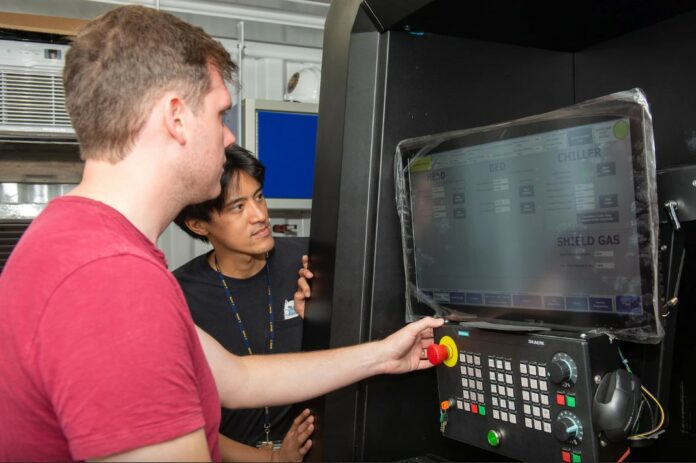
The article has been updated to reflect the fact that it is a Xerox ElemX 3D printer that has been installed on the ship and to provide further information on the technical specifications of the 3D printer.
A partnership between Naval Postgraduate School (NPS) and Commander, Naval Surface Force, U.S. Pacific Fleet (COMNAVSURFPAC) led to the installation of a 3D printer onto the ship USS Essex (LHD 2).
The operation is described as the first one where a ship would participate in the initial testing and evaluation of the 3D printer during underway conditions to determine the printer’s viability when out to sea.
The ElemX 3D printer from Xerox is the one that has been installed on the ship. As a reminder, the installation builds on the relationship between the U.S. Navy and Xerox Elem Additive that began with the Naval Postgraduate School in Monterey, California receiving the first-ever installation of the ElemX in 2020.
“The military supply chain is among the most complex in the world and putting the ElemX on USS Essex means that sailors can now bypass that complexity and print parts when and where they need them,” said Tali Rosman, GM of Elem Additive. “We are proud to continue our partnership with the Navy to help them advance their additive manufacturing capabilities and execute their long-term vision.”
The ElemX leverages Xerox’s liquid metal AM technology that uses standard aluminum wire. Unlike other metal 3D printing technologies, there are no hazardous metal powders with ElemX and no need for special facility modifications or personal protective equipment to operate the machine. The printer also requires minimal post-processing and therefore provides a faster time-to-part. This ability to produce reliable replacement parts on-demand reduces the dependency on complex global supply chains for deployed forces, a press release reads.
The operation’s ultimate goal is to enhance the overall readiness of any warfighting organization, Lt. Cmdr. Nicolas Batista, the Aircraft Intermediate Maintenance Department (AIMD) officer aboard Essex, said “Having this printer aboard will essentially accelerate, enhance and increase our warfighting readiness” – not to mention that the ship will become more self-sufficient.
Batista stated this 3D printer, is one of the fastest printers on the market, capable of fabricating and printing aluminum up to 10” by 10” (25.40 cm x 25.40 cm). Many common parts such as eat sinks, housings, fuel adapters, bleed air valves, valve covers and more can be created on the ship.
What does the evaluation of the 3D printer look like?
The evaluation of the printer will first start with a training delivered to Sailors who will be using the equipment. Aviation Structural Mechanic 3rd Class Roxanne Barrera expressed her excitement to be one of the first Sailors to receive this training.
According to Batista, Commander Naval Air Force, U.S. Pacific Fleet (COMNAVAIRPAC) and Commander, Naval Air Systems Command (COMNAVAIRSYSCOM) have also initiated efforts to establish an AIMD work center, solely designed for the AM concept, and are striving towards the capability of fabricating needed aircraft parts with a 3D Printer.
“Additive Manufacturing (AM) has become a priority and it’s evident that AM will provide a greater posture in warfighting efforts across the fleet and will enhance expeditionary maintenance that contributes to our Surface Competitive Edge.”
During testing and evaluation at sea, a team aboard Essex will create various shipboard aluminum items with the 3D printer and provide feedback to NPS and COMNAVSURFPAC on the results.
Remember, you can post job opportunities in the AM Industry on 3D ADEPT Media free of charge or look for a job via our job board. Make sure to follow us on our social networks and subscribe to our weekly newsletter : Facebook, Twitter, LinkedIn & Instagram ! If you want to be featured in the next issue of our digital magazine or if you hear a story that needs to be heard, make sure you send it to contact@3dadept.com.





